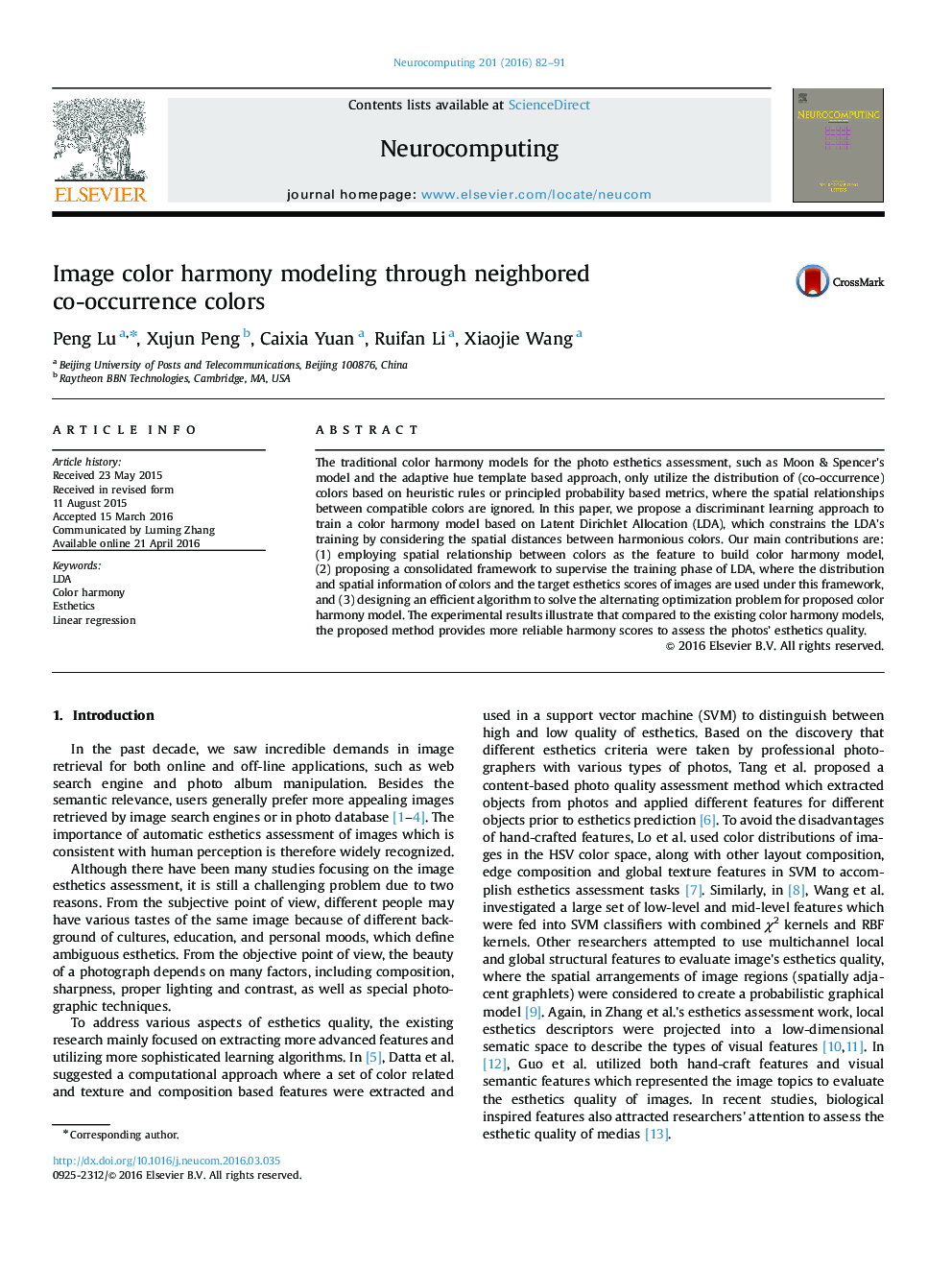| Article ID | Journal | Published Year | Pages | File Type |
|---|---|---|---|---|
| 405811 | Neurocomputing | 2016 | 10 Pages |
The traditional color harmony models for the photo esthetics assessment, such as Moon & Spencer׳s model and the adaptive hue template based approach, only utilize the distribution of (co-occurrence) colors based on heuristic rules or principled probability based metrics, where the spatial relationships between compatible colors are ignored. In this paper, we propose a discriminant learning approach to train a color harmony model based on Latent Dirichlet Allocation (LDA), which constrains the LDA׳s training by considering the spatial distances between harmonious colors. Our main contributions are: (1) employing spatial relationship between colors as the feature to build color harmony model, (2) proposing a consolidated framework to supervise the training phase of LDA, where the distribution and spatial information of colors and the target esthetics scores of images are used under this framework, and (3) designing an efficient algorithm to solve the alternating optimization problem for proposed color harmony model. The experimental results illustrate that compared to the existing color harmony models, the proposed method provides more reliable harmony scores to assess the photos’ esthetics quality.
